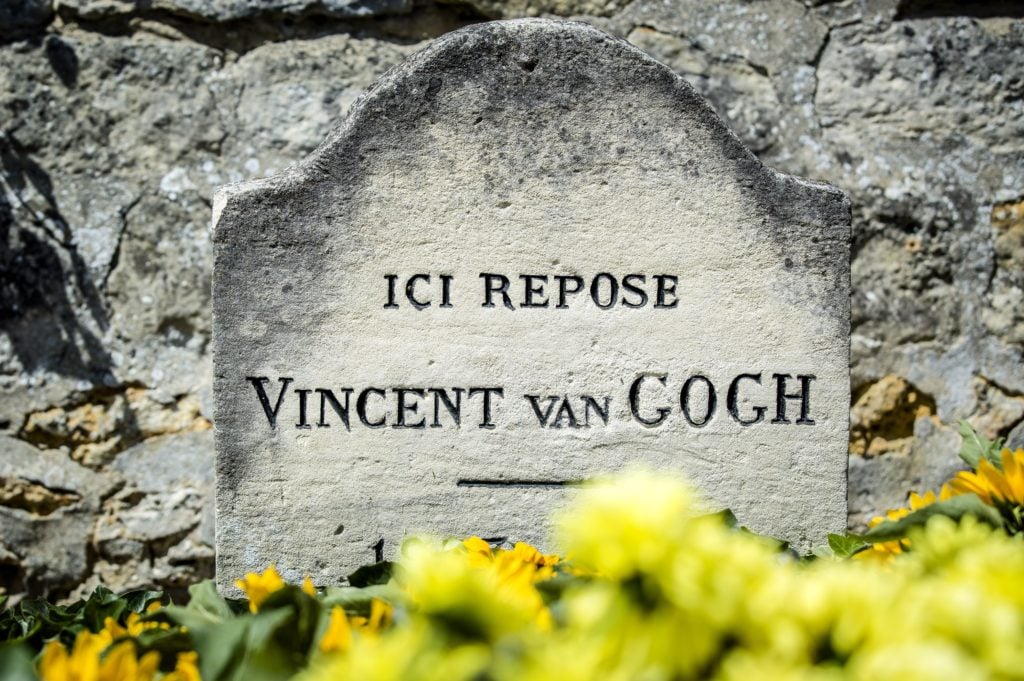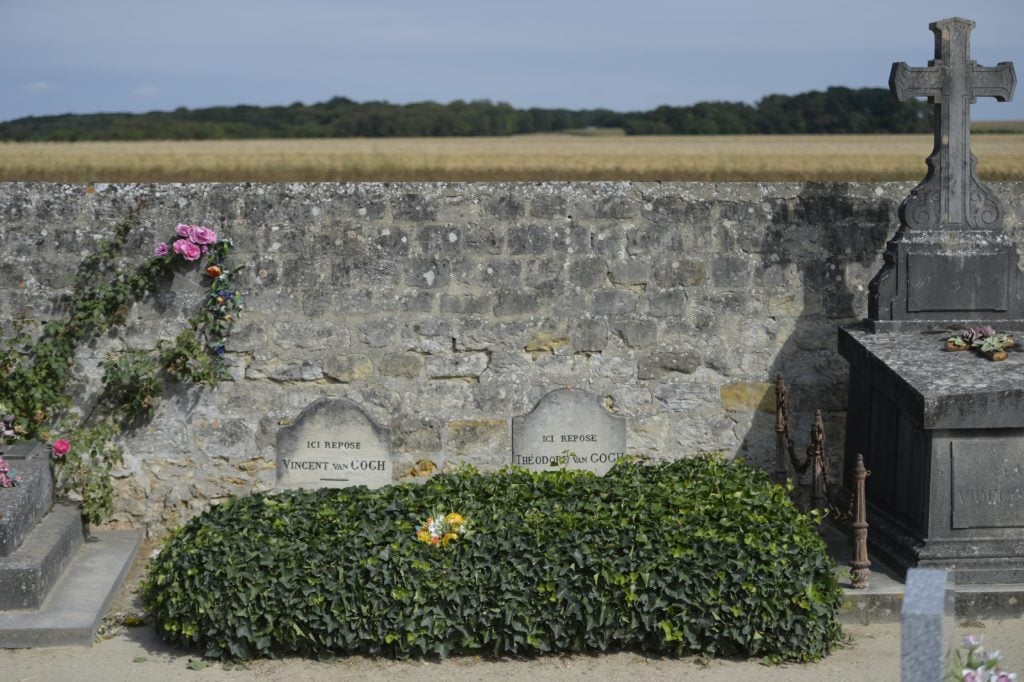Art World
Campaign Launches to Save Vincent van Gogh’s Grave, in Desperate Need of Restoration
The funds allotted fall short of what is needed to repair the site.

The funds allotted fall short of what is needed to repair the site.

Caroline Elbaor

A campaign has been launched to save Vincent van Gogh’s grave, which is in serious need of repair after a storm in 2015 that left the cemetery and adjoining church devastated.
The French town of Auvers-sur-Oise—the artist’s resting place in the northwestern suburbs of Paris—and the Institut Van Gogh are seeking to raise €1.2 million ($1.28 million) to restore the church of Notre-Dame-de-l’Assomption and make the graveyard more visitor-friendly, according to a report by the Art Newspaper.
The roof of the 13th century church—which is portrayed in a Van Gogh painting hanging in the Musée d’Orsay in Paris—is leaking and on the verge of collapse. Moreover, the headstones of Van Gogh and his brother, Theo, are water-damaged and the cemetery frequently floods.
“The cemetery was made to welcome 5,000 to 10,000 people a year and we receive an average of 250,000. It’s the most visited cemetery in France after Père Lachaise [in Paris],” said Dominique-Charles Janssens, president of the Institut Van Gogh. “People were still coming and they had their feet in the water.”

Photo Courtesy MIGUEL MEDINA/AFP/Getty Images.
The French state and regional government have promised to fund 60 percent of the €600,000 ($640,080) it will cost to repair the church’s roof, and the local council pledged an additional 20 percent, while a crowdfunding campaign was created last June to raise the remaining €120,000 ($128,016) required. At the current moment, €57,000 ($60,807) has been raised.
Construction is set to begin in May or June on the northern part of the church, which, according to Le Parisien, suffered the worst damage in the storm.
Yet, the Institut Van Gogh is continuing to request donations for the church, as well as €600,000 more to go towards draining, lighting, and security systems at the Auvers-sur-Oise cemetery.
Moreover, the institute aims to overhaul the church grounds entirely in an effort to match the description of “a little flowery greenery” Van Gogh wrote of in a letter to his sister Wilhelmina.
Van Gogh spent the final 70 days of his life in the town, creating about one painting per day before committing suicide in a nearby wheat field in July of 1890.
To donate to the cause, visit https://helpvangogh.heoh.net.